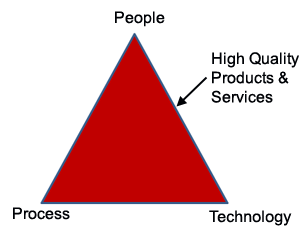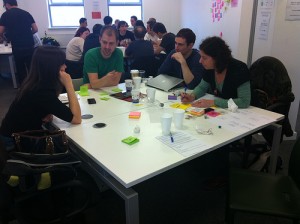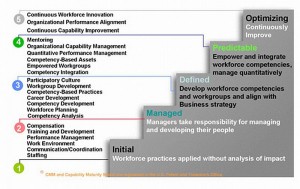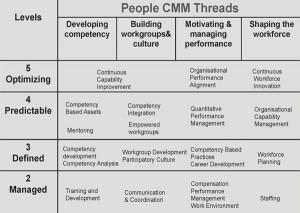Warning: Illegal string offset 'title' in /usr/www/users/playsn/pibold/wp-content/plugins/table-of-content/plugin.php on line 48
Warning: Cannot assign an empty string to a string offset in /usr/www/users/playsn/pibold/wp-content/plugins/table-of-content/plugin.php on line 48
Warning: Illegal string offset 'title-tag' in /usr/www/users/playsn/pibold/wp-content/plugins/table-of-content/plugin.php on line 50
Warning: Illegal string offset 'title-tag' in /usr/www/users/playsn/pibold/wp-content/plugins/table-of-content/plugin.php on line 52
Warning: DOMDocument::loadXML(): Opening and ending tag mismatch: hr line 5 and body in Entity, line: 6 in /usr/www/users/playsn/pibold/wp-content/plugins/wordpress-amazon-associate/APaPi/AmazonProduct/Result.php on line 149
Warning: DOMDocument::loadXML(): Opening and ending tag mismatch: body line 5 and html in Entity, line: 7 in /usr/www/users/playsn/pibold/wp-content/plugins/wordpress-amazon-associate/APaPi/AmazonProduct/Result.php on line 149
Warning: DOMDocument::loadXML(): EndTag: '</' not found in Entity, line: 8 in /usr/www/users/playsn/pibold/wp-content/plugins/wordpress-amazon-associate/APaPi/AmazonProduct/Result.php on line 149
Warning: Invalid argument supplied for foreach() in /usr/www/users/playsn/pibold/wp-content/plugins/wordpress-amazon-associate/APaPi/AmazonProduct/Result.php on line 160
Warning: DOMDocument::loadXML(): Opening and ending tag mismatch: hr line 5 and body in Entity, line: 6 in /usr/www/users/playsn/pibold/wp-content/plugins/wordpress-amazon-associate/APaPi/AmazonProduct/Result.php on line 149
Warning: DOMDocument::loadXML(): Opening and ending tag mismatch: body line 5 and html in Entity, line: 7 in /usr/www/users/playsn/pibold/wp-content/plugins/wordpress-amazon-associate/APaPi/AmazonProduct/Result.php on line 149
Warning: DOMDocument::loadXML(): EndTag: '</' not found in Entity, line: 8 in /usr/www/users/playsn/pibold/wp-content/plugins/wordpress-amazon-associate/APaPi/AmazonProduct/Result.php on line 149
Warning: Invalid argument supplied for foreach() in /usr/www/users/playsn/pibold/wp-content/plugins/wordpress-amazon-associate/APaPi/AmazonProduct/Result.php on line 160
Warning: DOMDocument::loadXML(): Opening and ending tag mismatch: hr line 5 and body in Entity, line: 6 in /usr/www/users/playsn/pibold/wp-content/plugins/wordpress-amazon-associate/APaPi/AmazonProduct/Result.php on line 149
Warning: DOMDocument::loadXML(): Opening and ending tag mismatch: body line 5 and html in Entity, line: 7 in /usr/www/users/playsn/pibold/wp-content/plugins/wordpress-amazon-associate/APaPi/AmazonProduct/Result.php on line 149
Warning: DOMDocument::loadXML(): EndTag: '</' not found in Entity, line: 8 in /usr/www/users/playsn/pibold/wp-content/plugins/wordpress-amazon-associate/APaPi/AmazonProduct/Result.php on line 149
Warning: Invalid argument supplied for foreach() in /usr/www/users/playsn/pibold/wp-content/plugins/wordpress-amazon-associate/APaPi/AmazonProduct/Result.php on line 160
Warning: DOMDocument::loadXML(): Opening and ending tag mismatch: hr line 5 and body in Entity, line: 6 in /usr/www/users/playsn/pibold/wp-content/plugins/wordpress-amazon-associate/APaPi/AmazonProduct/Result.php on line 149
Warning: DOMDocument::loadXML(): Opening and ending tag mismatch: body line 5 and html in Entity, line: 7 in /usr/www/users/playsn/pibold/wp-content/plugins/wordpress-amazon-associate/APaPi/AmazonProduct/Result.php on line 149
Warning: DOMDocument::loadXML(): EndTag: '</' not found in Entity, line: 8 in /usr/www/users/playsn/pibold/wp-content/plugins/wordpress-amazon-associate/APaPi/AmazonProduct/Result.php on line 149
Warning: Invalid argument supplied for foreach() in /usr/www/users/playsn/pibold/wp-content/plugins/wordpress-amazon-associate/APaPi/AmazonProduct/Result.php on line 160
Zusamenfassung
[Top]
Das People Capability Maturity Model (People CMM, P-CMM, PCMM) ist Teil der CMMI Produktfamilie von Prozessreifegradmodellen. Es ist ein Rahmenwerk, das Unternehmen anleitet, wie sie ihre Prozesse zur Verwaltung und Weiterentwicklung der Arbeitnehmer verbessern können. PCMM hilft Unternehmen, ihre HR-Prozesse zu verbessern. Es etabliert ein Programm zur kontinuierlichen Weiterbildung der Arbeiternehmer, setzt Prioritäten für Verbesserungsmaßnahmen, bindet die Arbeitnehmerweiterbildung in die Prozessoptimierung ein, und etabliert eine culture of excellence. PCMM greift auf proven practices aus den Gebieten HR, Wissensmanagement und Organisationentwicklung zurück.
PCMM
[Top]
PCMM ist Teil der CMMI Produktfamilie von Prozessreifegradmodellen. Es beschreibt den für die kontinuierliche Verbesserung der HR-Prozesse zur Verwaltung und Weiterbildung der Arbeitnehmer nötigen Fortschritt .
Das Rahmenwerk ermöglicht Unternehmen, sich auf zentrale HR-Prozessgebiete (Key Process Areas) zu konzentrieren und die Grundlage für eine Verbesserung zu legen. Im Gegesatz zu anderen HR-Modellen, verlangt PCMM, dass die Key Process Areas, die Verbesserungsmaßnahmen, Interventionen, Grundsätze und Arbeitsanweisungen durchgängig im Unternehmen institutionalisiert werden — unabhängig von Funktion oder hierarischer Position der Mitarbeiter. Die Verbesserungsmaßnahmen müssen daher sämtliche Unternehmensebenen erfassen, um die durchgängige Fokussierung zu gewährleisten, eine Kultur der Mitbestimmung zu etablieren und den Einzelnen zu Innovation und Kreativität zu ermutigen.
Die Prozessreife des PCMM reicht von ad hoc und inkonsistent durchgeführter Anwendung, bis hin zu reif und diszipliniert durchgeführter Entwicklung von Fachwissen und Motivation der Arbeitnehmer. Normalerweise beziehen sich Prozessreifegradmodelle wie ISO/IEC 15504 oder CMMI auf organistorische Veränderung. Dabei liegt der Schwerpunkt auf den operationellen (Produkt-) Entwicklungsprozessen. PCMM stellt dagegen die drei wichtigsten Faktoren in den Vordergrund, um Produkte und (IT-)Dienstleistungen bereitstellen zu können:
- Menschen (People)
- Prozesse (Process)
- Produkte (Products, Technology)
 Diese 3Ps des PCMM sind vergleichbar mit den 4Ps der ITIL: People, Processes, Products (tools and technology) and Partners (suppliers, vendors and outsourcing organisations). PCMM zeichnet sich durch einen ganzheitlichen Ansatz Mitarbeiter-orientierter Themen aus.
Diese 3Ps des PCMM sind vergleichbar mit den 4Ps der ITIL: People, Processes, Products (tools and technology) and Partners (suppliers, vendors and outsourcing organisations). PCMM zeichnet sich durch einen ganzheitlichen Ansatz Mitarbeiter-orientierter Themen aus.
PCMM Reifegradstufen
[Top]
Im Gegensatz zu den anderen, am Software Engineering Institute (SEI) der Carnegie-Mellon Universität entwickelten, gestuften Reifegradmodellen der CMMI Produktfamilie], die sich mehr Softwareentwicklung, besteht PCMM aus Reifegradstufen, die eine stetige Weiterentwicklung der Mitarbeiterkompetenzen ermöglichen. Diese Reifegrade reichen von Level 1, initial, bei dem die Praktiken häufig ihren eigentlichen Zweck verpassen, weil sie entweder inkonsistent, oder schlimmstenfalls, nur tradiert weitergereicht („Haben wir schon immer so gemacht…“) werden — bis zu Level 5, optimised, wo jeder im Unternehmen fokussiert ist, seine eigenen Fähigkeiten und die Mitarbeiterprozesse ständig zu verbesseren.
PCMM definiert die folgenden fünf Reifegrade:
- Initial.
- Repeatable. Die Key Process Areas auf Level 2 bilden die grundlegenden HR-Aktivitäten:
- Arbeitsumgebung
- Kommunikation
- Stellenbesetzung
- Performance Management
- Schulung/Training
- Besoldung
- Defined. Die Key Process Areas auf Level 3 adressieren Themen, die Kernkompetenzen eines Unternehmen zu identifizieren und die HR-Aktivitäten auszurichten:
- Analyse von Mitarbeiterwissen und -fähigkeiten
- Arbeitnehmerplannung
- Entwicklung/Förderung von Kompetenzen
- Karierreentwicklung
- Kompetenz-basierte Methoden
- Mitbestimmungskultur
- Managed. Die Key Process Areas auf Level 4 konzentrieren sich auf die quantitative Steuerung des organisatiorschen Wachstums im Personalmanagement und im Aufbau kompetenz-basierter Teams:
- Mentoring
- Teamentwicklung
- Team-Basierte Praktiken
- Organisatorisches Kompetenzmanagement
- Organisatorisches
- Performance Alignment
- Optimizing. Die Key Process Areas auf Level 5 decken Themer der kontinuierlichen Verbesserung von Methoden zur Kompetenzentwicklung sowohl auf unternehmerischer als auch auf individueller Ebene:
- Entwicklung der persönlichen Kompetenz
- Coaching
- Ständige Innovation der Mitarbeiter
Weiterführende Literatur
[Top]
- PCMM – SEI homepage
- Version 2 of the PCMM — PDF [2362 KB]
- Bill Curtis: The Outlines & Highlights for People CMM – A Framework for Human Capital Management. Academic Internet Publ, Dezember 2010.
- Bill Curtis, William E. Hefley, Sally A. Miller: The People CMM – A Framework for Human Capital Management (SEI Series in Software Engineering). Addison-Wesley Longman, Amsterdam, 2009.






Leave a Reply